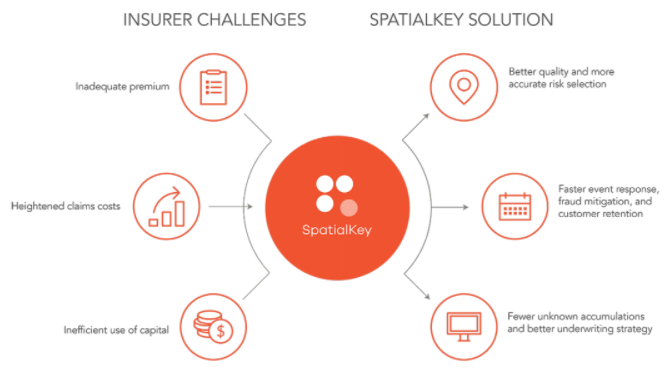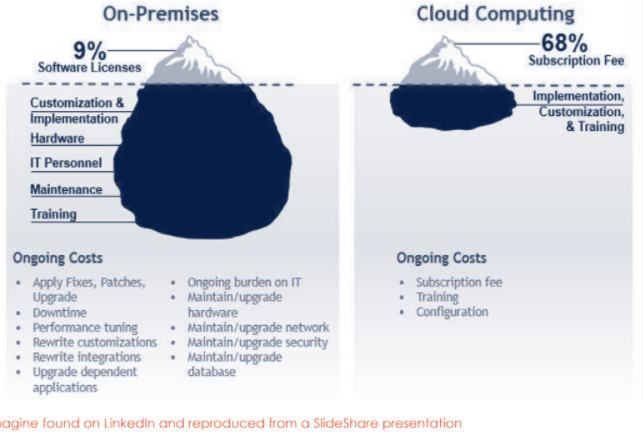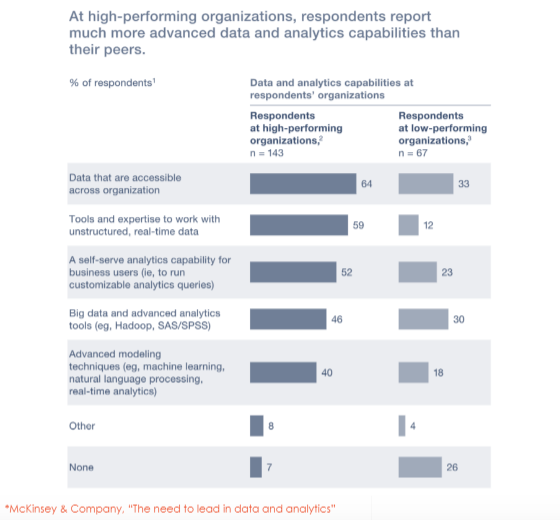How to Close the Gap on Life Sales
The aging sales force doesn't reach younger people. The answer: Look beyond your own agents and break down barriers to other industries.

The aging sales force doesn't reach younger people. The answer: Look beyond your own agents and break down barriers to other industries.

Get Involved
Our authors are what set Insurance Thought Leadership apart.
|
Partner with us
We’d love to talk to you about how we can improve your marketing ROI.
|

Dave Hanley is CEO of fintech startup Tomorrow. Previously, Hanley founded Banyan Branch, a social media marketing agency acquired by Deloitte Digital, and was vice president of marketing at Shelfari, the social network for book readers. He helped grow it to more than 2 million members in 18 months before Amazon acquired it.
Insurtech disruptors have digital savvy but need to learn a lot about the industry. Leading incumbents could be the ones to teach them.

 Insurers like these have a message for insurtech disruptors and incumbents alike. It’s time to implement digital solutions and start meeting consumer needs for channel and product choice.
See also: Insurtech Checklist: 10 Differentiators
To learn more about outcompeting in a changing industry, download our thought leadership piece, The Changing P&C Insurance Industry: What’s It Costing You?
Insurers like these have a message for insurtech disruptors and incumbents alike. It’s time to implement digital solutions and start meeting consumer needs for channel and product choice.
See also: Insurtech Checklist: 10 Differentiators
To learn more about outcompeting in a changing industry, download our thought leadership piece, The Changing P&C Insurance Industry: What’s It Costing You?
Get Involved
Our authors are what set Insurance Thought Leadership apart.
|
Partner with us
We’d love to talk to you about how we can improve your marketing ROI.
|

Tom Hammond is the chief strategy officer at Confie. He was previously the president of U.S. operations at Bolt Solutions.
Gig economy platforms are now beginning to offer drone services, making drones more accessible than ever for insurers.

Get Involved
Our authors are what set Insurance Thought Leadership apart.
|
Partner with us
We’d love to talk to you about how we can improve your marketing ROI.
|

Robin Roberson is the managing director of North America for Claim Central, a pioneer in claims fulfillment technology with an open two-sided ecosystem. As previous CEO and co-founder of WeGoLook, she grew the business to over 45,000 global independent contractors.
Mental health has been a taboo topic in workers' comp, but we increasingly see the need to address the topic.

Get Involved
Our authors are what set Insurance Thought Leadership apart.
|
Partner with us
We’d love to talk to you about how we can improve your marketing ROI.
|

Kimberly George is a senior vice president, senior healthcare adviser at Sedgwick. She will explore and work to improve Sedgwick’s understanding of how healthcare reform affects its business models and product and service offerings.

Mark Walls is the vice president, client engagement, at Safety National.
He is also the founder of the Work Comp Analysis Group on LinkedIn, which is the largest discussion community dedicated to workers' compensation issues.
Here are six stages that innovation programs must go through to succeed.

Our chief innovation officer, Guy Fraker, has been talking to dozens of major companies since he joined us a couple of months ago and has found that many innovation efforts at incumbents are stuck. The companies know they need to do something to take advantage of opportunities and to head off competitive threats, but they generate some ideas and … well, then what?
Guy gets companies un-stuck. That’s what he’s done in his distinguished career as an innovation leader, focusing on insurance, and that’s what he’s doing now. He has crystallized his thinking into six stages that innovation programs must go through to succeed. Here is the short version:
--Are you sure?
The decision that seems intuitively correct is often not the best way to go – and the mistake does not become evident for some time. So, stop for a moment and define success. For instance, innovators who start at $0 and grow revenue to $1 million may exult. But will $1 million work for a company with $10 million of existing revenue? $100 million?
Are you really ready to go to market in a new way? To disrupt your business model?
--Deciding strategy
A frequently asked question is, "How do we foster a more innovative culture?” Guy says he responds: "Innovate for growth, and let the requirements for success change the culture."
Corporate innovators must be able to move faster than an organization’s ability to say "no,” but here’s a secret: The key is not thinking "outside the box." The key is actually having leaders define the box within which they want innovation to happen – innovation responds to constraints.
Don’t underestimate the power of people’s enthusiasm when selecting your strategic domain.
--Deciding the basics
Once you start considering startups, investments, new ideas from within the company and new ideas from customers, you quickly feel like you’ve unleashed chaos. You can keep things under control by having a day-long (or shorter) facilitated session that defines the limits of the strategic domain for innovation and of the business models that can be considered. You also need to decide whether to embed the innovation effort in business units or centralize the work.
--Resources
Will a dedicated team be established? Will the efforts be assigned to "virtual resources" (code for: We're going to leave people in their day jobs, and they're going to do this part-time)? And who do they report to? Understand that highly effective executives—even those considered entrepreneurial within mid-sized to large corporations—operate quite differently from entrepreneurs and may not be the right fit.
Guy adds: "I always advocate for off-the-shelf innovation platforms [software]. Some organizations choose to build their own, which almost always proves to be the long road to town. Some organizations choose to go without, avoiding some upfront expense. I assure you that a good innovation platform mitigates the need for three to five full-time employees."
And: "One of the better-kept secrets is that innovation lives or dies in the middle of the organization. Part of your strategy should be around how leadership will manage the soft spots where participation may be slow in coming."
--Build a portfolio view
Every organization needs a single view of innovation activities, including concepts, startups and early-stage investments that are being considered. The axes vary, but you might think in terms of complexity (from "incremental" to "doesn’t exist today") and time horizons (from "immediate" to "three years"). Ideas that can be executed immediately and represent incremental change will be the most by volume but require the fewest resources. At the other end of the spectrum will be a few, resource-intensive "moon shots."
The key is to create a dashboard that enables an organization to manage the scope and number of concepts/investments in motion.
--Going to market
Often, the product should be introduced as though from a startup, with a small, dedicated team pounding the streets and using all available resources to market, capture feedback and recommend changes. This approach is very counterintuitive for most large organizations, so you need to lay the groundwork early.
Click here for the long version of Guy's thinking on the six steps to getting un-stuck. Better yet, go here to sign up for Guy’s blog.
Cheers,
Paul Carroll, Editor-in-Chief
Get Involved
Our authors are what set Insurance Thought Leadership apart.
|
Partner with us
We’d love to talk to you about how we can improve your marketing ROI.
|

Paul Carroll is the editor-in-chief of Insurance Thought Leadership.
He is also co-author of A Brief History of a Perfect Future: Inventing the Future We Can Proudly Leave Our Kids by 2050 and Billion Dollar Lessons: What You Can Learn From the Most Inexcusable Business Failures of the Last 25 Years and the author of a best-seller on IBM, published in 1993.
Carroll spent 17 years at the Wall Street Journal as an editor and reporter; he was nominated twice for the Pulitzer Prize. He later was a finalist for a National Magazine Award.
"Opt Out" will return, faster than expected, and with an improved concept that will quickly gain traction. We need to be prepared.

Get Involved
Our authors are what set Insurance Thought Leadership apart.
|
Partner with us
We’d love to talk to you about how we can improve your marketing ROI.
|

Bob Wilson is a founding partner, president and CEO of WorkersCompensation.com, based in Sarasota, Fla. He has presented at seminars and conferences on a variety of topics, related to both technology within the workers' compensation industry and bettering the workers' comp system through improved employee/employer relations and claims management techniques.
The telematics portfolio has shown on average 20% lower claims frequency on a risk-adjusted basis than the non-telematics portfolio.

 In contrast, another market used telematics in a completely different way—and it succeeded. Almost 20% of auto insurance policies sold and renewed in the last quarter of 2016 in Italy had a telematics device provided by an insurer based on the IVASS data. The European Connected Insurance Observatory—the European chapter of the insurance think tank I created, consisting of more than 30 European insurers, reinsurers and tech players with an active presence in the discussion from their Italian branches—estimated that 6.3 million Italian customers had a telematics policy at the end of 2016.
Some insurers in this market were able to use the telematics data to create value and share it with customers. The most successful product with the largest traction is based on three elements:
In contrast, another market used telematics in a completely different way—and it succeeded. Almost 20% of auto insurance policies sold and renewed in the last quarter of 2016 in Italy had a telematics device provided by an insurer based on the IVASS data. The European Connected Insurance Observatory—the European chapter of the insurance think tank I created, consisting of more than 30 European insurers, reinsurers and tech players with an active presence in the discussion from their Italian branches—estimated that 6.3 million Italian customers had a telematics policy at the end of 2016.
Some insurers in this market were able to use the telematics data to create value and share it with customers. The most successful product with the largest traction is based on three elements:
Get Involved
Our authors are what set Insurance Thought Leadership apart.
|
Partner with us
We’d love to talk to you about how we can improve your marketing ROI.
|

Matteo Carbone is founder and director of the Connected Insurance Observatory and a global insurtech thought leader. He is an author and public speaker who is internationally recognized as an insurance industry strategist with a specialization in innovation.
Negative misconceptions arise when insurtech gets linked to “disruption,” so it doesn't get all the positive vibes it deserves.

 Right now, insurers are being presented with the opportunity to embrace insurtech, to grow and innovate quickly through collaborative partnerships. Insurtech partnerships represent the new path forward and are poised to change how many insurers do business. This is all positive; however, it seems as though negative misconceptions arise when insurtech gets linked to “disruption.” “Disruption” is just an acknowledgement that technology is changing the industry. But because disruption carries a negative connotation, insurtech sometimes doesn’t get the positive vibes it deserves.
See also: Insurtechs Are Pushing for Transparency
Maybe you're still on the fence thinking, “I’m not sure insurtech is worth it” — worth the change, the hassle, the investment, whatever. Let’s address these doubts head-on and debunk some common insurtech misconceptions that could be holding you back:
Misconception 1: Insurtech is a bunch of hype.
Reality: Judging by the investment landscape alone, I feel confident that this movement has gone past hype.
Investment is happening by investors outside of insurance. Seeing VC firms such as General Catalyst, with interests that are typically outside of insurance, step up to invest in insurtech is a sign that this movement has traction.
From 2011 to 2017, VC funding for insurtech companies grew 31%. Between Series B and Series D funding, $2 to $3 billion is being directed to insurtechs annually. And, as of April 2017, Venture Scanner is tracking 1,185 insurance technology companies in 14 categories across 60 countries, with a total of $17.8 billion in funding.
Investors clearly see the value of insurtech as a catalyst to change how customers interact with insurance; a way to understand troves of data streaming in from important new sources like IOT, catastrophe data and more. Consumers expect real-time claims and smart driving apps, smart home devices and even rewards for wearables. Why, then, should insurers themselves expect less from technology? It makes sense that what technology can do for their customers, insurtech can do for them.
And, with the global insurance technology spend expected to reach $185 billion this year, it’s becoming evident that insurers themselves are actively pursuing investments in insurtech. Some large insurers and reinsurers are even creating units focused on identifying new investment opportunities to drive innovation to the benefit of the industry. Some also serve as incubators to get new companies off the ground.
As Stephen O’Hearn, global insurance leader at PwC, stated, “Insurtech will be a game changer for those who choose to embrace it.”
Insurtech isn’t just hype, it’s happening, and “good enough” is no longer, well, good enough. Whether you’re in underwriting, claims, exposure management — or you’re a CIO — insurtech will have an impact on you.
Misconception 2: Implementing insurtech is too costly.
Reality: Cloud technology has made the implementation and maintenance affordable and has reduced (or eliminated) the need for IT support.
Insurers face so many challenges that it can be difficult to dedicate resources to insurtech. The business case for “good enough” can appear stronger than the case for change; change comes with preconceived resource and cost notions.
But, by not embracing change, insurers are stuck in limbo — with “good enough” legacy systems and practices that limit growth. In fact, in one survey, 81% of participants admitted their existing IT systems hinder innovation. Put simply, there’s a significant cost to inaction — to your ability to compete, to retain and attract new customers and to make better risk decisions. Furthermore, all of this could test the long-term relevance of your business.
While there’s a cost to inaction, there’s also the significant opportunity for cost reduction. A 2017 Accenture report, “The Cloud as Rainmaker,” states, “Without cloud’s capacity and firepower, digital does not happen. Nor does an 80% cost savings.”
The fact is, SaaS-based software via the Cloud has made implementation and maintenance a mole hill instead of a mountain (see illustration below). With SpatialKey, for example, there’s no need for IT support. Insurers can be up and running on an intuitive platform — gleaning deeper analytic insights with good data literally in hours.
Right now, insurers are being presented with the opportunity to embrace insurtech, to grow and innovate quickly through collaborative partnerships. Insurtech partnerships represent the new path forward and are poised to change how many insurers do business. This is all positive; however, it seems as though negative misconceptions arise when insurtech gets linked to “disruption.” “Disruption” is just an acknowledgement that technology is changing the industry. But because disruption carries a negative connotation, insurtech sometimes doesn’t get the positive vibes it deserves.
See also: Insurtechs Are Pushing for Transparency
Maybe you're still on the fence thinking, “I’m not sure insurtech is worth it” — worth the change, the hassle, the investment, whatever. Let’s address these doubts head-on and debunk some common insurtech misconceptions that could be holding you back:
Misconception 1: Insurtech is a bunch of hype.
Reality: Judging by the investment landscape alone, I feel confident that this movement has gone past hype.
Investment is happening by investors outside of insurance. Seeing VC firms such as General Catalyst, with interests that are typically outside of insurance, step up to invest in insurtech is a sign that this movement has traction.
From 2011 to 2017, VC funding for insurtech companies grew 31%. Between Series B and Series D funding, $2 to $3 billion is being directed to insurtechs annually. And, as of April 2017, Venture Scanner is tracking 1,185 insurance technology companies in 14 categories across 60 countries, with a total of $17.8 billion in funding.
Investors clearly see the value of insurtech as a catalyst to change how customers interact with insurance; a way to understand troves of data streaming in from important new sources like IOT, catastrophe data and more. Consumers expect real-time claims and smart driving apps, smart home devices and even rewards for wearables. Why, then, should insurers themselves expect less from technology? It makes sense that what technology can do for their customers, insurtech can do for them.
And, with the global insurance technology spend expected to reach $185 billion this year, it’s becoming evident that insurers themselves are actively pursuing investments in insurtech. Some large insurers and reinsurers are even creating units focused on identifying new investment opportunities to drive innovation to the benefit of the industry. Some also serve as incubators to get new companies off the ground.
As Stephen O’Hearn, global insurance leader at PwC, stated, “Insurtech will be a game changer for those who choose to embrace it.”
Insurtech isn’t just hype, it’s happening, and “good enough” is no longer, well, good enough. Whether you’re in underwriting, claims, exposure management — or you’re a CIO — insurtech will have an impact on you.
Misconception 2: Implementing insurtech is too costly.
Reality: Cloud technology has made the implementation and maintenance affordable and has reduced (or eliminated) the need for IT support.
Insurers face so many challenges that it can be difficult to dedicate resources to insurtech. The business case for “good enough” can appear stronger than the case for change; change comes with preconceived resource and cost notions.
But, by not embracing change, insurers are stuck in limbo — with “good enough” legacy systems and practices that limit growth. In fact, in one survey, 81% of participants admitted their existing IT systems hinder innovation. Put simply, there’s a significant cost to inaction — to your ability to compete, to retain and attract new customers and to make better risk decisions. Furthermore, all of this could test the long-term relevance of your business.
While there’s a cost to inaction, there’s also the significant opportunity for cost reduction. A 2017 Accenture report, “The Cloud as Rainmaker,” states, “Without cloud’s capacity and firepower, digital does not happen. Nor does an 80% cost savings.”
The fact is, SaaS-based software via the Cloud has made implementation and maintenance a mole hill instead of a mountain (see illustration below). With SpatialKey, for example, there’s no need for IT support. Insurers can be up and running on an intuitive platform — gleaning deeper analytic insights with good data literally in hours.
 Misconception 3: In this soft market, my bottom line is under siege, and realizing the upside of insurtech is long-term.
Reality: Insurers are, in fact, reaping the rewards of better analytics.
Positive impacts of better risk decisions can be felt in the short term. A 2016 report from McKinsey & Company noted high-performing organizations were nearly twice as likely than their lower-performing peers to make advanced data and analytics accessible across their organizations. And high-performing organizations were twice as likely to employ self-serve analytics for their business users.
Misconception 3: In this soft market, my bottom line is under siege, and realizing the upside of insurtech is long-term.
Reality: Insurers are, in fact, reaping the rewards of better analytics.
Positive impacts of better risk decisions can be felt in the short term. A 2016 report from McKinsey & Company noted high-performing organizations were nearly twice as likely than their lower-performing peers to make advanced data and analytics accessible across their organizations. And high-performing organizations were twice as likely to employ self-serve analytics for their business users.
 Furthermore, in a survey by West Monroe Partners, “Data Driven Insurance: Harness Disruption and Lead the Way,” 57% of insurers said they somewhat or strongly agree that their companies are fully realizing the benefits of advanced analytics. The most commonly cited benefits were increased customer experience (27%), reduced claims costs (21%) and increased sales (14%).
Harnessing the power of insurtech to aggregate data and improve analytic insights creates the potential for a healthier, more profitable book and competitive advantage. We’ve seen this with our own clients who have been able to more accurately assess risk in order to comfortably underwrite opportunities they otherwise may have passed on. For more on this topic, watch SpatialKey’s joint presentation with RLI Insurance from this year’s RAA event: “Accelerating Quality Decisions with the Right Info, Right Now.”
See also: 5 Insurtech Trends for the Rest of 2017
Bottom line, all of these concerns are legitimate, and insurers are absolutely justified in questioning the value of something that has an impact on how they do business. The point of addressing these misconceptions is to prove that insurtech isn’t just buzz, it’s happening — it’s been happening — and it’s undoubtedly critical to staying competitive, relevant and profitable going forward.
But, in order to see any of these gains, insurtech must be viewed as a collaborative movement that helps us all win and moves the entire industry forward. And by “all,” that means commercial providers, too.
At SpatialKey, we know we can’t preach collaboration and not take a dose of our own medicine. It’s hypocritical to ask insurers to transform if, as solutions providers, we aren’t willing to do the same. Being a technology provider does not make SpatialKey immune from the need to digitally evolve; if anything, it’s infinitely more necessary that we always look to innovate. Our path is the same: collaboration. Collaborating with other experts — from technology to data providers — only makes us stronger. But, right now, there is unrealized potential to move the industry forward and deliver better, faster value to the industry as a whole.
As solutions providers, we, too, can do more, simply by embracing collaboration among each other.
To find out how collaboration leads to innovation, download: Mastering InsurTech with Smarter Collaboration.
Furthermore, in a survey by West Monroe Partners, “Data Driven Insurance: Harness Disruption and Lead the Way,” 57% of insurers said they somewhat or strongly agree that their companies are fully realizing the benefits of advanced analytics. The most commonly cited benefits were increased customer experience (27%), reduced claims costs (21%) and increased sales (14%).
Harnessing the power of insurtech to aggregate data and improve analytic insights creates the potential for a healthier, more profitable book and competitive advantage. We’ve seen this with our own clients who have been able to more accurately assess risk in order to comfortably underwrite opportunities they otherwise may have passed on. For more on this topic, watch SpatialKey’s joint presentation with RLI Insurance from this year’s RAA event: “Accelerating Quality Decisions with the Right Info, Right Now.”
See also: 5 Insurtech Trends for the Rest of 2017
Bottom line, all of these concerns are legitimate, and insurers are absolutely justified in questioning the value of something that has an impact on how they do business. The point of addressing these misconceptions is to prove that insurtech isn’t just buzz, it’s happening — it’s been happening — and it’s undoubtedly critical to staying competitive, relevant and profitable going forward.
But, in order to see any of these gains, insurtech must be viewed as a collaborative movement that helps us all win and moves the entire industry forward. And by “all,” that means commercial providers, too.
At SpatialKey, we know we can’t preach collaboration and not take a dose of our own medicine. It’s hypocritical to ask insurers to transform if, as solutions providers, we aren’t willing to do the same. Being a technology provider does not make SpatialKey immune from the need to digitally evolve; if anything, it’s infinitely more necessary that we always look to innovate. Our path is the same: collaboration. Collaborating with other experts — from technology to data providers — only makes us stronger. But, right now, there is unrealized potential to move the industry forward and deliver better, faster value to the industry as a whole.
As solutions providers, we, too, can do more, simply by embracing collaboration among each other.
To find out how collaboration leads to innovation, download: Mastering InsurTech with Smarter Collaboration.
Get Involved
Our authors are what set Insurance Thought Leadership apart.
|
Partner with us
We’d love to talk to you about how we can improve your marketing ROI.
|

Bret Stone is president at SpatialKey. He’s passionate about solving insurers' analytic challenges and driving innovation to market through well-designed analytics, workflow and expert content. Before joining SpatialKey in 2012, he held analytic and product management roles at RMS, Willis Re and Allstate.
For the love of God, please, please, PLEASE stop comparing buying insurance to buying a consumer product on Amazon!

“What’s holding most insurers back from meeting the speed and performance of a customer experience leader like Amazon? In a nutshell, siloed legacy systems.”No, siloed legacy systems are NOT the reasons why the insurance industry doesn’t meet the “customer experience” speed and performance of Amazon. The reason the insurance industry doesn’t meet the “customer experience” provided by Amazon is because WE DON’T SELL WHAT AMAZON SELLS! Amazon sells consumer products. Insurance is not a product. If you’re compelled to label insurance, it's a process, not a product. See also: Insurance Coverage Porn Another case in point from a recent Reuters article that quoted Ajit Jain, Berkshire Hathaway's “top insurance executive”:
"Amazon.com can deliver something to you in four hours. If people can buy paper towels on the internet, why not insurance?"Sorry, sir, but buying insurance is NOT the same as buying paper towels. Yes, technology can — and should — be used to improve the effectiveness and efficiency of the insurance process, but phone apps and big data are not going to make a silk purse out of a sow’s ear. (BTW, there are some great silk purse bargains on Amazon right now if you hurry, and the good news is that choosing the wrong one likely won’t bankrupt you, as can happen if you choose the wrong insurance “product.”) Not every buying transaction can or should be reduced to an Amazon-like “1-click” purchase. If I want to buy paper towels, does Amazon need to ask me to explain what I’m going to use them for? Or who is going to use them? Or where I’m going to use them? Or…? The insurance PROCESS starts with assisting individuals, families and organizations in identifying their many — and often unique — exposures to financial loss. That information is then used to determine what is the best combination of insurance policy forms and risk management techniques to minimize the likelihood of a serious or even catastrophic financial loss. And if there is a loss occurrence, the process continues in both a financial and emotional way. “Insurance” is not a commodity product. It’s a regulated, service-oriented process where the “product,” if you will, is a complex, detailed legal contract that is highly litigated. To compare it to paper towels or any other online consumer purchase is infantile. How many bad Amazon purchasing decisions can lead you to financial ruin? See also: Innovation: ‘Where Do We Start?’ Why do we listen to and enable people who lack historical perspective and clearly are fundamentally clueless about how the insurance industry works and why it works that way, who really don't understand the overriding mission of this industry? Technology is a tool and a means to an end, the “end” being protecting individuals, families and organizations from financial catastrophe. Unless it’s the product “disrupters” and consultants are selling... then it's the end in and of itself. Caveat emptor.
Get Involved
Our authors are what set Insurance Thought Leadership apart.
|
Partner with us
We’d love to talk to you about how we can improve your marketing ROI.
|

William C. Wilson, Jr., CPCU, ARM, AIM, AAM is the founder of Insurance Commentary.com. He retired in December 2016 from the Independent Insurance Agents & Brokers of America, where he served as associate vice president of education and research.
With a “Synthetic Sensor,” you will be able to just plug it into an outlet, and that room will immediately become a smart room.

Get Involved
Our authors are what set Insurance Thought Leadership apart.
|
Partner with us
We’d love to talk to you about how we can improve your marketing ROI.
|

Denise Garth is senior vice president, strategic marketing, responsible for leading marketing, industry relations and innovation in support of Majesco's client-centric strategy.